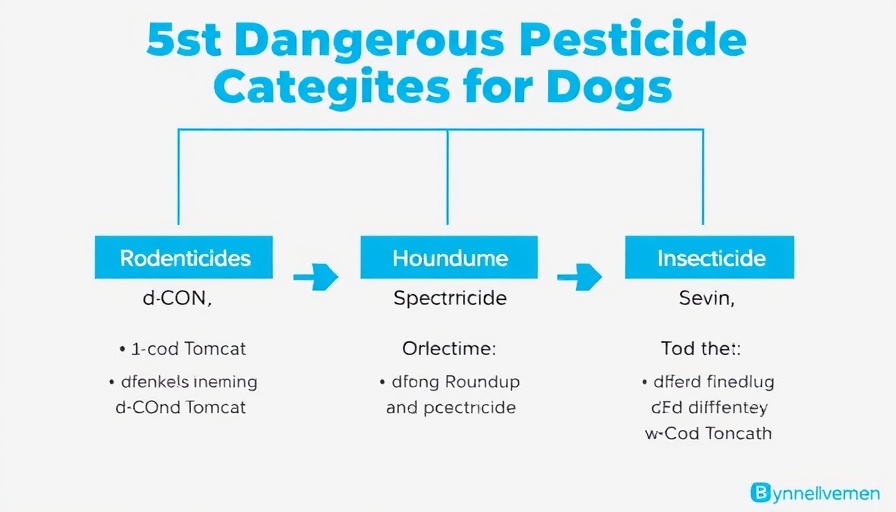
Protecting Your Pooch: The Hidden Risks of Pest Control
As responsible pet owners, it's vital to understand that pest control measures designed to eliminate annoying insects and rodents can pose serious health risks to our dogs. Pesticides often contain powerful chemicals that, while effective at targeting pests, can also be toxic to pets, leading to health issues ranging from mild irritation to severe poisoning. In fact, pesticide poisoning ranks among the top toxicities reported by the ASPCA's Animal Poison Control Center, making it imperative for dog owners to take necessary precautions before embarking on pest management strategies.
Identifying Hazardous Chemicals in Pesticides
Many common pesticides can be harmful to our four-legged companions if they accidentally come into contact with the treated areas. High-risk products include rodenticides like d-CON, which can affect any mammalian pet, not just the rodents they target. Additionally, herbicides such as Roundup are known to create adverse effects if ingested, while insecticides such as Raid and Sevin are especially dangerous if absorbed through the skin or inhaled. Common signs of pesticide exposure can range from vomiting and drooling to lethargy and decreased appetite. Monitoring your dog closely during pest control treatments is crucial because symptoms can appear suddenly or take days to manifest.
Essential Safety Precautions Before Treatment
Preparation is key to ensuring your dog remains safe during pest control treatments. Here are a few practical steps every pet owner should implement:
- Secure Your Pet: Before any treatment begins, ensure your dog is safely confined to a separate room away from the areas being treated. Consider a room that is as far away as possible from the treatment zones, with solid doors that can be securely closed.
- Create a Safe Zone: Transform a spare room, bathroom, or even a basement into a sanctuary for your pooch. This space should include fresh water, familiar comforts, and adequate ventilation, ensuring that your dog feels secure and comfortable.
- Remove Environmental Risks: Clear treated areas of any dog toys, bedding, or other porous materials that may absorb harmful chemicals. These items can contain remnants of pesticides long after the treatment is completed.
Emergency Response: What to Do If Your Dog Is Exposed
If you suspect that your dog has been exposed to harmful pesticides, immediate action is vital. Contact the ASPCA's Poison Control hotline right away, as rapid treatment can often result in complete recovery. Take note of the pesticide brand, the application location, and any symptoms your dog is exhibiting—this information will be crucial for your veterinarian in determining the most effective treatment protocol.
Pest Control Practices That Consider Pet Safety
Some pest control services prioritize the safety of pet owners and their furry friends when designing treatment plans. According to experts from Insight Pest Control, informing your pest control provider about your pets allows them to tailor their techniques accordingly, choosing safer, pet-friendly methods to eliminate unwanted pests effectively. Pest management techniques should not only focus on eradicating pests but also consider the overall health and safety of pets in the home.
Conclusion: Prioritizing Your Dog’s Safety in Pest Management
Every pet owner must be vigilant when scheduling pest control treatments. Understanding the potential risks, being proactive in creating a safe environment, and communicating effectively with pest control specialists can help prevent severe health risks to your cherished pets. With a little preparation and care, you can protect your furry companions while effectively managing pest control needs in your home.
Stay informed and always prioritize your dog's safety by implementing these strategies. For personalized pest control solutions that consider the safety of all family members, including pets, consult professional services that specialize in pet-friendly practices.
 Add Row
Add Row  Add
Add 




Write A Comment